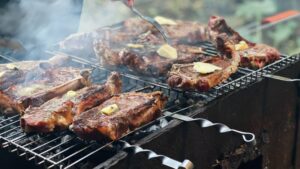
How To Enhance Your DIY Meat Probe with Voice Control Features
Every culinary enthusiast knows the importance of a perfectly cooked steak, and that’s where a meat probe comes in handy. But what if we could
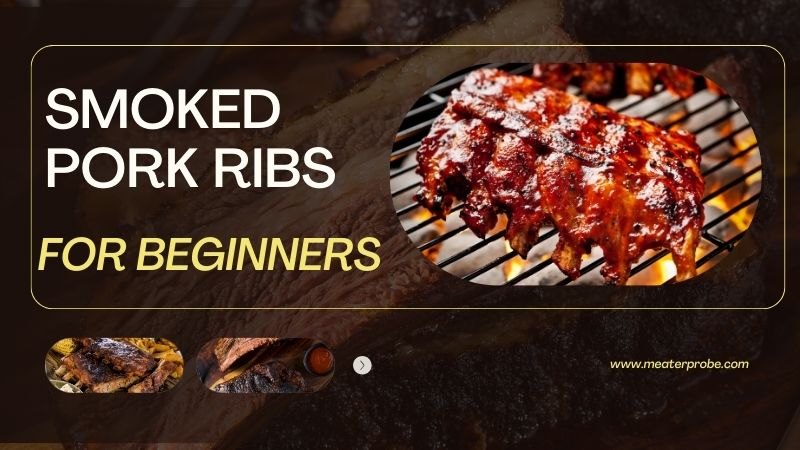
This guide is perfect for beginners who want to learn how to smoke pork ribs. If you’re new to smoking ribs, you’re in the right place. Let’s get started.
Before we begin, let’s make sure we have everything ready to smoke pork ribs.
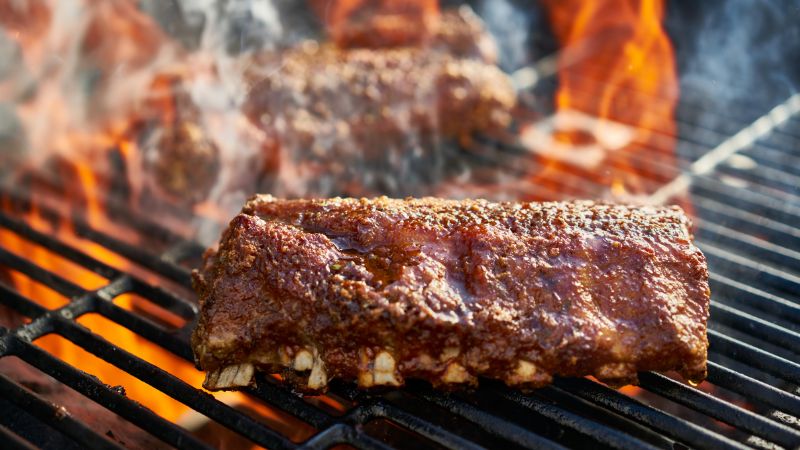
When you’re at the grocery store picking out ribs, there are some key things to look for. The ribs should have a bright pinkish-red color; avoid any that have grey spots or look discolored. It’s also best to choose ribs with straight bones, as this makes slicing them easier after cooking.
Always go for ribs that are meaty and thick – this is especially important for competitions, but let’s be honest, everyone loves a thick, juicy BBQ rib.
After preparing all things, let’s smoke pork ribs step by step:
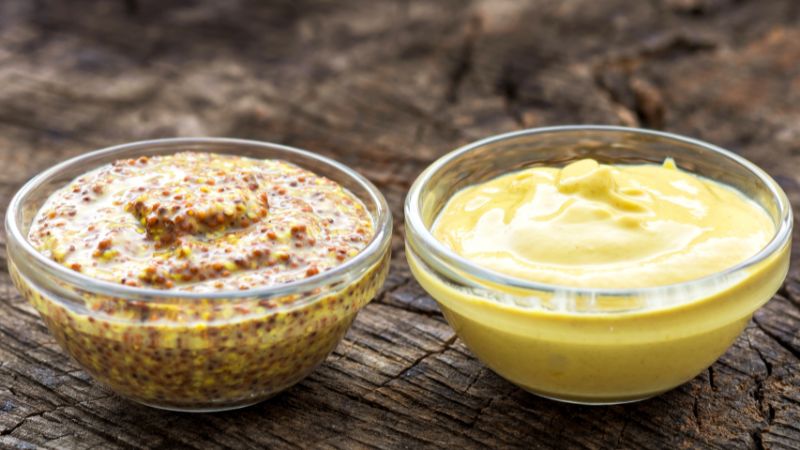
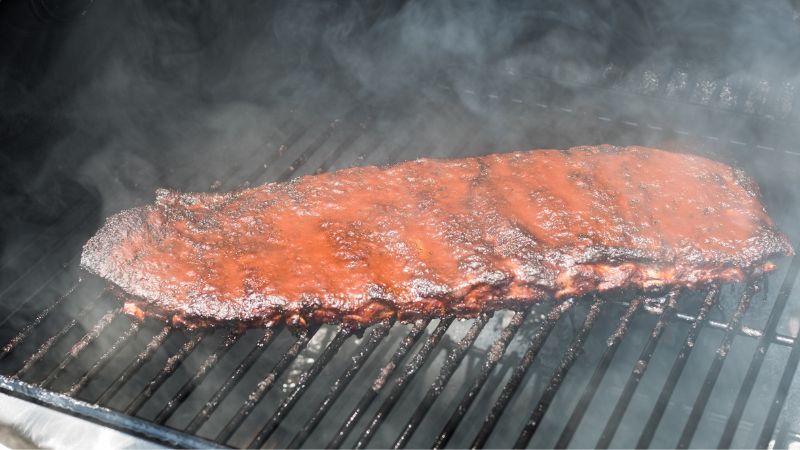
Ribs are thinner compared to cuts like brisket or roast. It’s beneficial to start smoking them while they’re as cold as possible. This gives them more time to soak up the smoke flavor and develop a good bark.
After you’ve seasoned the ribs, place them in the refrigerator for about 30 minutes. Alternatively, you can put them in the freezer for 10 minutes if you’re short on time.
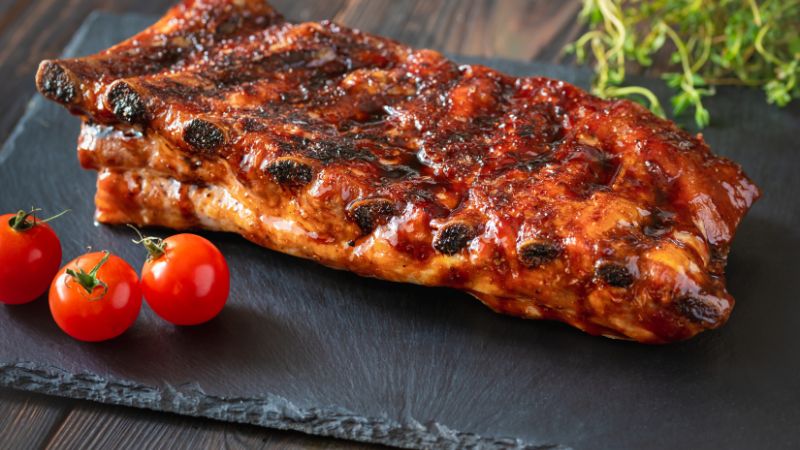
When smoking ribs, there’s a delicate balance between keeping the meat moist and allowing a good bark or crust to form.
After the ribs have been smoking for a few hours, the rub will start to dry, and a crust begins to develop. To check if it’s the right time to mop, lightly run your finger over the ribs. If the rub sticks to your finger, it’s not yet time to mop. Keep smoking the ribs until the rub sets in and sticks to the meat. Once the bark has formed, then you can start mopping or spraying.
For mopping, gently dab the ribs with a mop brush, just enough to moisten them slightly. A simple mix of water, BBQ sauce, and apple cider vinegar works well. If you’re using a spray bottle, avoid adding sauce unless it’s strained to prevent clogging the sprayer.
The decision to wrap ribs during smoking is based on two key factors: color and temperature.
Color: Look at the color of the ribs and the quality of the bark. If you’re satisfied with how they look and want to preserve that color without darkening the meat further, it’s time to wrap the ribs.
Temperature: The other important factor is the temperature of the meat. Once the ribs reach around 160-170 degrees Fahrenheit, they won’t absorb any more smoke. Wrapping them at this stage helps the meat to tenderize further and pull back from the bone.
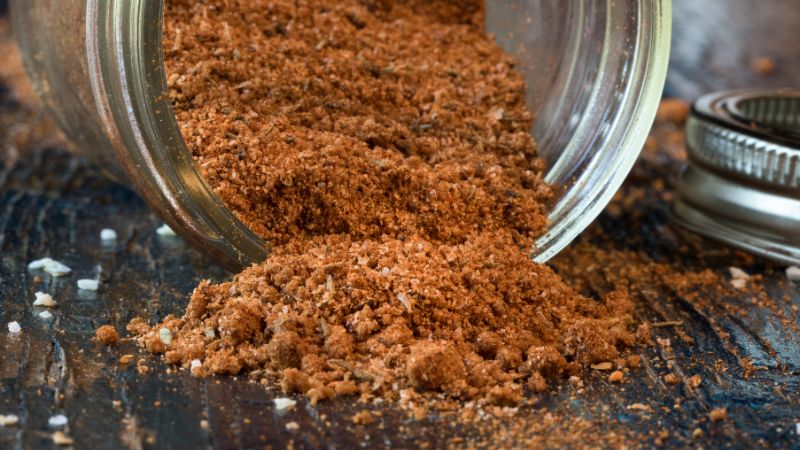
There are three methods for wrapping ribs, each with its pros and cons, depending on your preference and the desired outcome.
Wrapping ribs in foil
Wrapping ribs in butcher paper
No wrap ribs
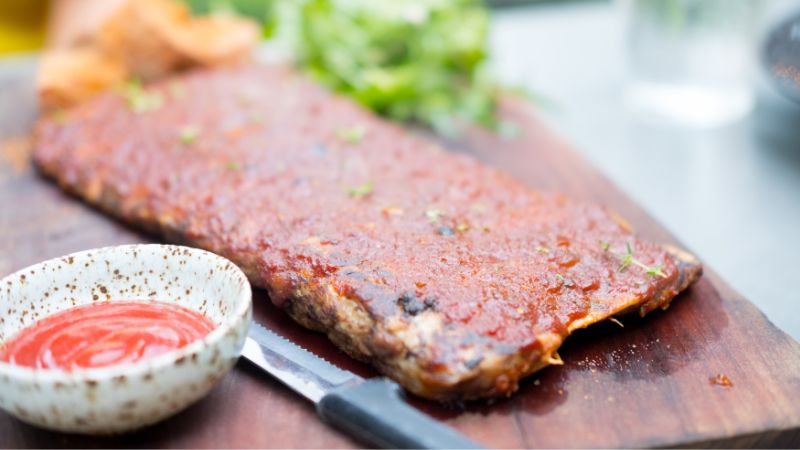
Preheat smoker: Set your smoker to 225 degrees Fahrenheit.
30-minute prep: Trim the ribs, remove the membrane, and brush a light coat of mustard on both sides. Season liberally with a dry rub and refrigerate for 30 minutes before placing them on the pit.
Hour 0: Place ribs on the smoker. Don’t open the smoker for two hours, allowing the ribs to absorb smoke.
Hour 2: Check if a bark has formed on the ribs. If so, gently mop or spray them for the first time. Cook for another hour.
Hour 3: Mop the ribs again and check the temperature. If they’ve reached 160-170 degrees Fahrenheit and you’re happy with the color, wrap them in foil or butcher paper.
Hour 4: Lay the ribs on the foil or paper, bone side up. Add butter, a tablespoon of honey, and a sprinkle of rub. Wrap tightly and return to the smoker. Optionally, increase the temperature to as high as 275 degrees Fahrenheit to speed up cooking.
Hour 4.5-5: Unwrap and probe the meat. Ribs are usually ready at 200-210 degrees Fahrenheit. Check for tenderness with a probe thermometer. If they’re not tender enough, rewrap and cook for another 30-60 minutes.
Hour 5-6: Once tender, serve dry or with sauce. If saucing, use the foil as a tray and brush a thin layer of sauce on the ribs. Smoke for an additional 30 minutes. Sauce multiple times if desired, allowing time for it to stick to the meat.
Cutting: Turn the rack upside down for easier cutting. You might lose some sauce, but you can baste more on top.
Note the bite: A perfect rib bite should leave a clean half-moon mark and expose clean meat off the bone. If the whole rib falls off or doesn’t leave a clean bite, it’s likely overcooked. Adjust wrap time in the future. If the bite is tough, or the meat doesn’t come off the bone cleanly, it might need longer cooking next time.
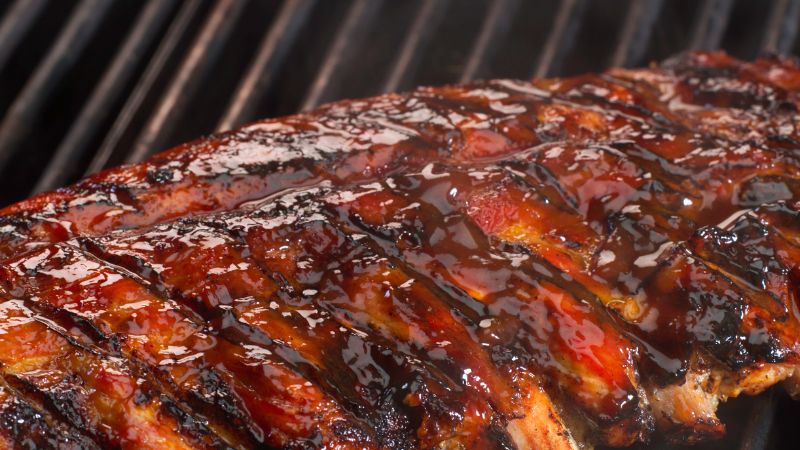
Expect variations: If you nail smoking pork ribs on your first try, that’s fantastic! But don’t get discouraged if it doesn’t happen right away. Even seasoned pitmasters and BBQ enthusiasts have had their share of less-than-perfect ribs. Remember, it’s a learning process.
Know your smoker: Each smoker, whether it’s an offset stick burner, a ceramic smoker, or a pellet grill, behaves differently. They have unique quirks, hot spots, and erratic behaviors. Spend time getting to know your smoker and understanding how it cooks.
Monitor and record: Keep track of the ideal smoking temperature for ribs on your specific smoker. It can be helpful to make mental or even written notes. Some people keep a journal of their cooking experiences, noting weather conditions, cooking times, temperatures, and ingredients for each session.
Analyze the ribs: Before cooking, examine each rack of ribs. Are they meaty and thick, or do they seem thin and smaller than usual? This observation can guide you in making adjustments during the cooking process. Each rack of ribs may require a slightly different approach based on its characteristics.
When you’re smoking ribs, aim for an inside temperature of about 200 degrees Fahrenheit. This makes the ribs tender and juicy. If you want ribs that are soft and fall off the bone, cook them a bit more, up to 205-210 degrees Fahrenheit.
The time it takes to smoke ribs can change a lot. It depends on how big the ribs are and even the weather. For a smaller rack of baby back ribs, it usually takes 3-4 hours. But for a bigger rack of spare ribs, it might take as long as 6 hours.
You might know about the 3-2-1 method for cooking ribs(3 hours of smoking, 2 hours of wrapping, and 1 hour of cooking). It’s a helpful starting point, especially if you’re new to smoking ribs, but don’t think you have to stick to it exactly. The size and thickness of the ribs, and what kind they are, can change how long they need to cook. It’s better to look at the ribs and feel them to see if they’re done, rather than just watching the clock and thermometer. Think of time and temperature as helpful hints for when to check your ribs.
Paying attention to how tender the meat is and how the ribs look will tell you more than just the temperature. As you get better at these things, you’ll learn more about cooking ribs and how to make them just the way you like.
In this section, we’ll answer some common questions about smoking ribs. Whether you’re a beginner or looking to refine your technique, these faqs cover essential aspects of smoking ribs to help you achieve that perfect cook every time.
Can I smoke ribs without a smoker?
Yes, you can use a charcoal grill or even an oven, though a smoker is ideal for authentic flavor.
What is the 3-2-1 method for smoking ribs?
The 3-2-1 method is a simple technique for smoking ribs. It involves smoking the ribs for 3 hours, wrapping them in foil with some liquid cooking them for another 2 hours, and then unwrapping and finishing them on the smoker for 1 final hour. This method helps in achieving tender, flavorful ribs with a nice crust.
How do I know when the ribs are done?
Ribs are done when they reach an internal temperature of 200-210 degrees Fahrenheit but also check for tenderness and a clean bite. For more details, please read our article: How Can You Tell If Your Pork Ribs Are Done?
Should I always remove the membrane?
It’s recommended to remove the membrane for better flavor absorption and a more tender texture.
Can I smoke different types of ribs the same way?
While the basic method is similar, cooking times may vary based on the type and size of the ribs.
What’s the best wood to use for smoking ribs?
Fruit woods like apple or cherry are popular for a milder flavor, while hickory or oak provide a stronger smoke taste.


Every culinary enthusiast knows the importance of a perfectly cooked steak, and that’s where a meat probe comes in handy. But what if we could

When it comes to cooking perfection, a meat probe is an indispensable tool for any chef or home cook. But in the world of meat
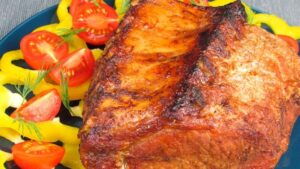
The moment you bring a meat probe into your kitchen, it’s not just about cooking anymore; it’s about precision, about transforming an ordinary meal into

Ever questioned if a meat probe could be your secret weapon for the perfect roast chicken? It’s a culinary showdown: the precision of a meat
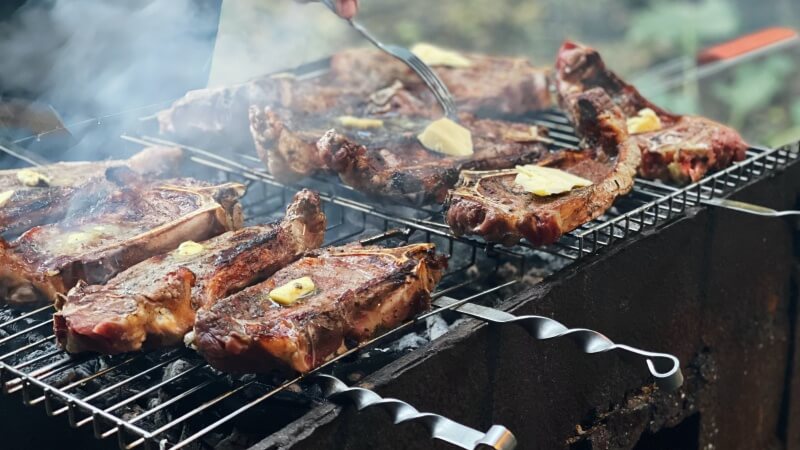
Every culinary enthusiast knows the importance of a perfectly cooked steak, and that’s where a meat probe comes in handy. But what if we could

When it comes to cooking perfection, a meat probe is an indispensable tool for any chef or home cook. But in the world of meat
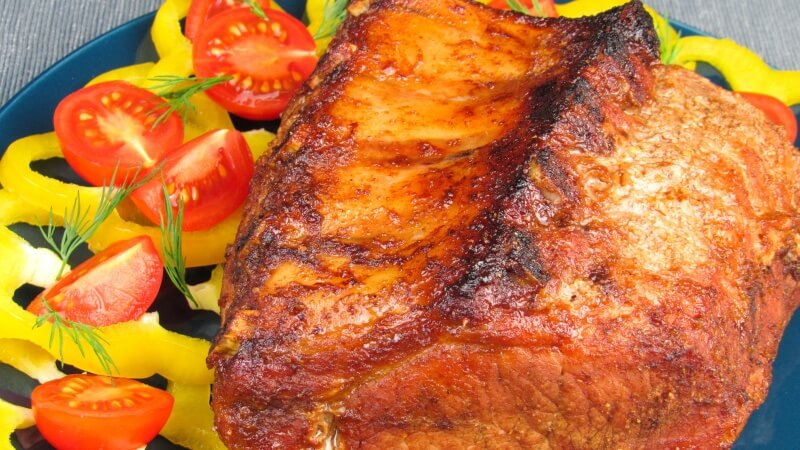
The moment you bring a meat probe into your kitchen, it’s not just about cooking anymore; it’s about precision, about transforming an ordinary meal into

Ever questioned if a meat probe could be your secret weapon for the perfect roast chicken? It’s a culinary showdown: the precision of a meat
Copyright © 2024 meaterprobe. All Rights Reserved.